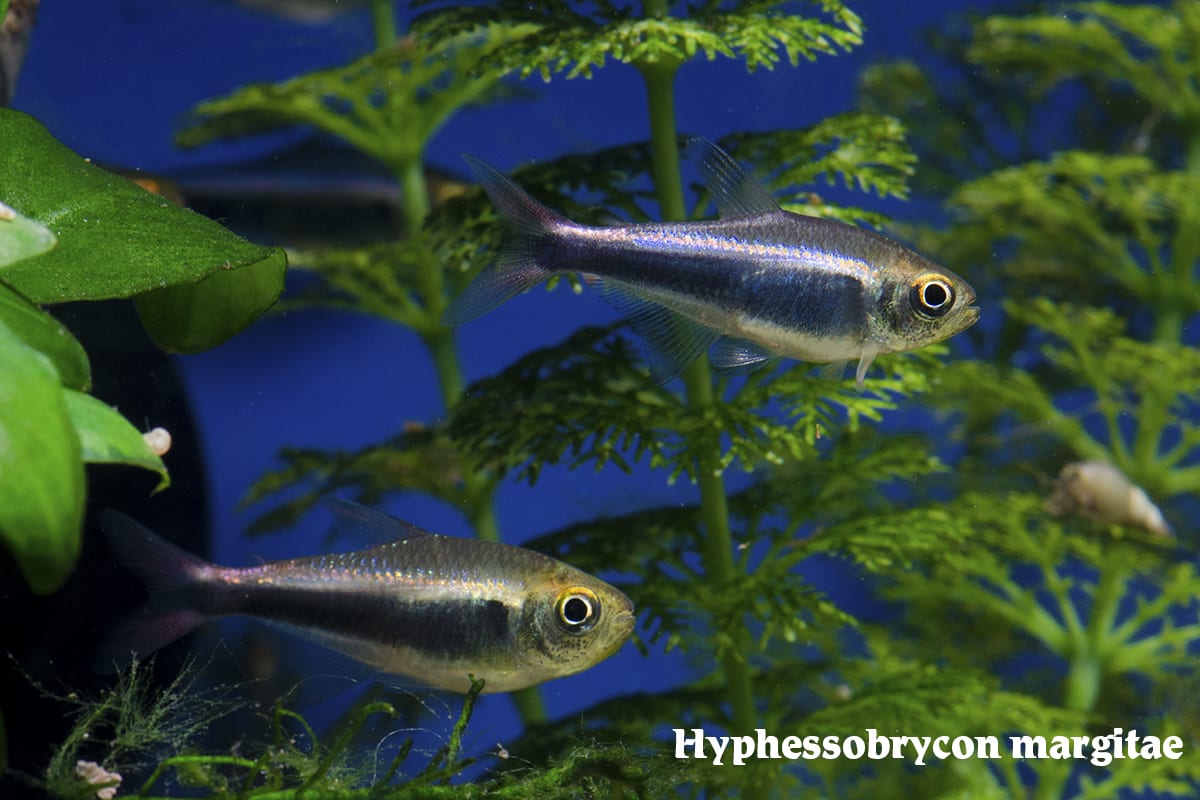Traversing Muddy Waters and the Blues
Traversing Muddy Waters and the Blues
No one knows the blues like McKinley Morganfield did. But before he made his move to Chicago to invent his own kind of blues, win 6 Grammys, and get inducted into the Rock and Roll Hall of Fame, he exorcised his sorrows by getting filthy in his local Deer Creek as a child, gaining him the nickname “Muddy”. While we wouldn’t dare pay homage to the great Muddy Waters in song, it seems appropriate to celebrate the 105th anniversary of his birth by highlighting of few of our blues, or rather blue fish. A few of our favorites include Hemiancistrus sp. “L128”, Hyphessobrycon melanostichos, and Hyphessobrycon margitae.
Scientific NameHemiancistrus sp. L128
Common NameBlue Phantom Pleco
Temperature / pH77 to 86°F / 6.0 to 7.0 pH
Native LocationVenezuela
Preferred DietOmnivorous
Mostly likely not the subject of Muddy’s “Catfish Blues”, we like to think he wouldn’t mind being these tough blue fellows. H. sp. “L128”, or more commonly “Blue Phantom Plecos” are beautiful armored, sucker-mouthed catfish from the Rio Orinoco of Venezuela. Reaching up to 7 inches in length, these plecos are dark blue and dotted with white. Due to its large size, we recommend they be kept in tanks no smaller than 20 gallons, and that they be well furnished with hiding spots. Tanks should be equipped with sandy substrate, and lots of driftwood, rocks, caves, and shale slabs arranged to form many nooks and crannies. So long as they have the option of seclusion, these blue phantoms are very peaceful and can be kept alongside a number of peaceful South American species. Some suitable tank mates include silver dollars, tetras, and Prochilodus. Omnivorous and easy to feed, these plecos will eat tank algae, but they should be fed varied live and frozen foods like daphnia, brine, and bloodworm in addition. They will also accept sinking pellets, wafers, and raw vegetables.
Scientific NameHyphessobrycon melanostichos
Common NameBlue Ribbon Tetras
Temperature / pH70 to 82°F / 5.0 to 7.5 pH
Native LocationBrazil
Preferred DietOmnivorous
Swimming into first, just like his 1971 album They Call me Muddy Waters in the Grammys, H. melanostichos represents the reverence Muddy earned and deserved from his colleagues and the public. Known more commonly as “Blue Ribbon Tetras”, these fish are small tetras from the upper Rio Tapajos in Brazil. Reaching a maximum of 1.5 inches in length, they exhibit silver bodies with a dark horizontal stripe, red-accented ventral and caudal fins, and shimmering blue backs. Found amongst shallow rivers with clear waters, sand, small stones, and marginal riparian vegetation, they do best in tanks including as many of those characteristics as possible. We recommend using sandy substrate, dense vegetation, and furnishings like rocks and driftwood. Peaceful community fish by nature, they are best kept alongside similarly-sized characids, peaceful catfish and loricariids, and peaceful dwarf cichlids. Schooling fish by nature, they should be kept in mixed-sex groups of 8 to 10 individuals. Most likely omnivorous in the wild feeding on invertebrates, algae, and fallen fruit, these tetras should be fed varied diets consisting of high-quality dried foods, live and frozen invertebrates like brine or bloodworm, and some fruit and vegetable content.
Scientific NameHyphessobrycon margitae
Common NameBleeding Blue Tetra
Temperature / pH68 to 78°F / 5.0 to 7.0 pH
Native LocationPeru
Preferred DietOmnivorous
Channeling the pain and sorrow expressed in Muddy’s tunes, H. margitae is no stranger to bleeding wounds, or at least appearing as if they have them. Commonly known as “Bleeding Blue Tetras”, these beauties hail from Peru, and were only just recently classified as a valid species. Formerly known as H.sp.“Red-blue Peru”, this species has swept the aquarium hobby by storm. Reaching nearly 2 inches in length, they have thick black-barred sides, bright red fins, and shiny blue backs. Known most commonly to the Loreto region of Peru, they inhabit forest streams and minor tributaries with large amounts of overhanging vegetation and submerged roots and leaf litter. Tanks are best equipped with sandy substrate, driftwood branches and roots, lots of plants, and dried leaf litter. Very peaceful and shoaling by nature, they must be in groups of 8 to 10 conspecifics and can be kept in most community setups alongside similarly-sized characids, and non-predatory catfish and small cichlids. Another omnivorous tetra, they can be fed following the guidelines for the blue ribbon tetras above.
Got the blues? Let it out in a healthy way, embrace it, and feel better. If you’re anything like us, fish tanks are a place of zen for you to collect your thoughts. What better way to rid yourself of blues than with a few blue specimens, doing their fishy thing without a care in the world–maybe to the tune of Muddy Waters in the background? Give us a call, and our experts will help find you the cure.


